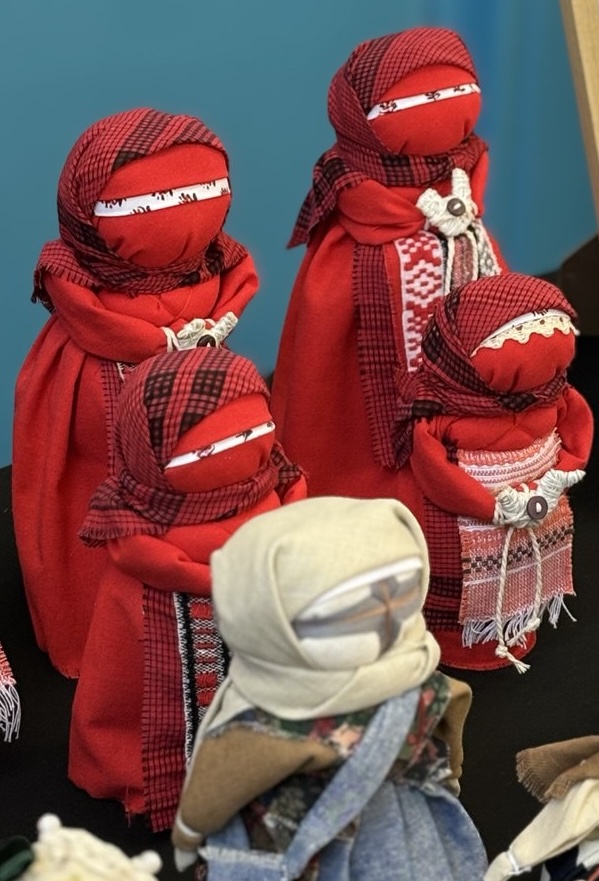'A quiet storyteller of our homeland'
The motanka doll is a female figure, made of cloth, in a
variety of designs. Unlike ordinary toy dolls, it doesn't
have facial features, and is said to be an amulet. Like
other traditional Ukrainian folk designs, it has grown in
popularity as the aggression against the country has
increased.

Hanna's motanka dolls
When my family and I arrived in the UK in 2022,
everything seemed unfamiliar – the streets, the
language, even the air. It was hard for us to start a
new life, adapt to society and make new friends. The
only thing I could do here as well as at home was
embroidery. Creating with my hands has always brought
me peace. I could immerse myself in my thoughts and
think about plans for the future.
I have always liked handicrafts. As a child, I
embroidered different pictures, knitted small items of
clothing, made decorative items for the home. I liked
the process of creation itself, the feeling of how
something slowly takes shape and colour.
Soon, our community came up with the idea of
organising events for our British friends, where we
could talk more about our culture and traditions. I
also wanted to share a piece of my home with our new
community, tell where I come from and what family
traditions we have. That’s when I decided to create a
Ukrainian folk doll – Motanka.
Motanka dolls are more than just a toy or an
ornament. They carry the memory of ancestors,
traditions and meanings. They tell the story of the
creation of the world and the history of each
individual family. Certain details show which region
each doll was made in. The process of its production
is unique, and every detail, colour, the direction in
which the fabric is wound, and even the day of
creation have a certain meaning. It is a deep process
that connects many generations.
When I make Motanka, I feel that I am weaving the
past and the present. Each doll becomes a small vessel
for hope, care and heritage. It became a way of
communication, when we were able to share our
traditions, stories, the meaning behind them with our
British friends. I never thought that something so
small – a hand-made doll – could contain so much
power. But when I see someone’s eyes light up when
they learn about our traditions, or when I teach a
child how to properly fold fabric, I know I’m doing
more than just crafting. I’m sharing love, identity,
and resilience.
And so every Motanka I make is a quiet storyteller of
our homeland and our hopes for the future.
Hanna Mariienko
OBERIG
|
creative
workshop
Photo: Hanna teaches motanka–making at the Kupala
festival in Brighton, 2023.

What motanka means today
A lot of what we know about the modern motanka is to do with things that Ukrainians invented more or less recently. Unfortunately we don’t have many reliable sources that can tell us what the colours and symbols traditionally meant. Some researchers say that we only have a few old books about motankas, and there isn’t anything in them about motankas being amulets, or about their colour symbolism. Other people say that those books were written in the 19th century, and the authors only went to a few villages to do their research, but there are modern Ukrainians who were told by their own grandmothers and great-grandmothers that motankas are amulet dolls, and why their great-grandmothers used particular colours when making them. I don’t really think we can know for sure.
So it’s all a mixture – a bit of passed-down knowledge, a bit of fan fiction, a bit of academia, a bit of folklore. But I think we can see one of the most important reasons for art and for folklore here. It is needed to heal people and help people in their times of trauma. We can definitely say that these are now amulet dolls, because we started sending them to the soldiers on the front line, and the soldiers say that they keep them safe, so we have given the dolls this meaning. This is our ancient and modern folklore: it’s the combination of the ancient stuff and the response of the Ukrainian nation and modern young people to the ongoing war.
Vladyslava Bondar
Photo: Motanka dolls made by Hanna Mariienko
